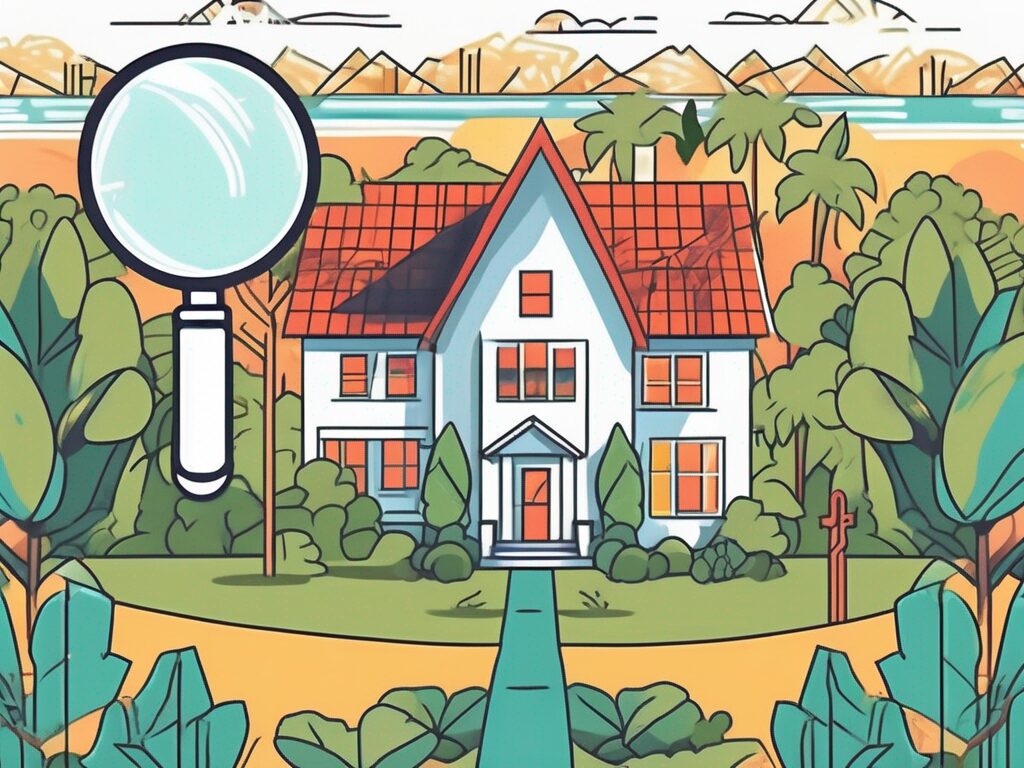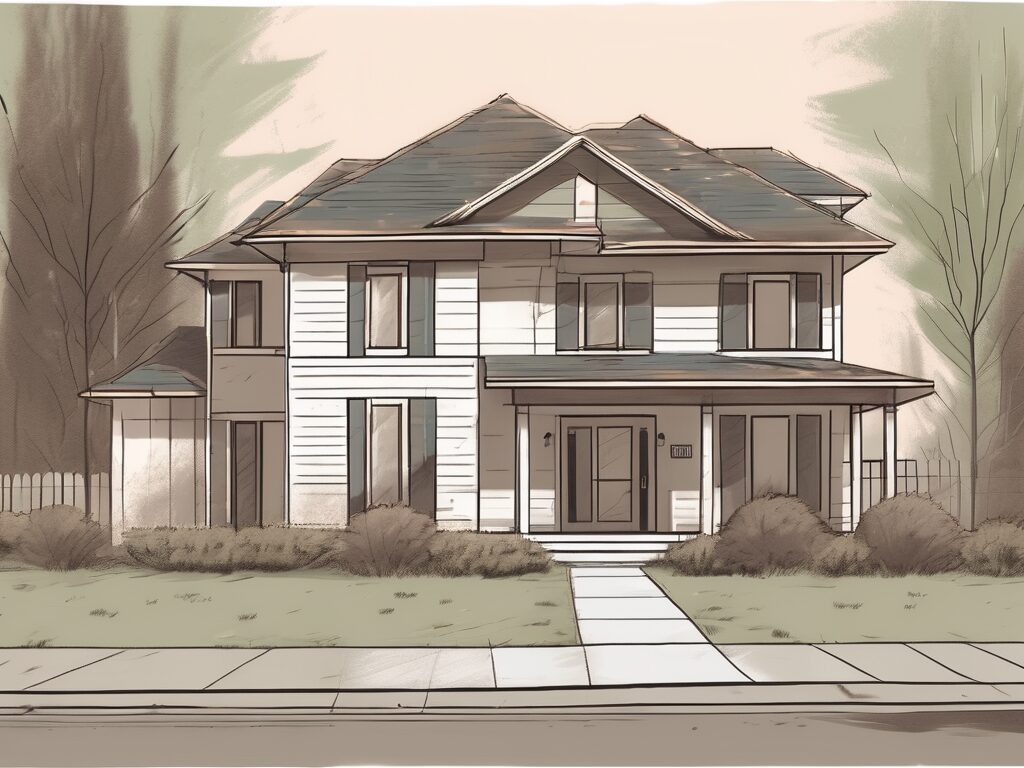
Agent A-Team or Solo Superhero? Finding the Right Real Estate Partner for Your Selling Journey in Wildwood Florida
When it comes to selling your home in Wildwood, Florida,…
January 29, 2024
Selling a house can be a daunting task, especially when it comes to deciding whether or not to make repairs before putting it on the market. However, there is an alternative approach that many homeowners are taking – selling their house “as-is”. In this ultimate guide, we will explore the concept of selling a house “as-is”, the reasons to consider this option, and the step-by-step process involved. So, if you’re looking to sell your house without any repairs, read on to learn all you need to know.
When we talk about selling a house “as-is”, it means exactly what it sounds like – selling the property in its current condition, without making any repairs or renovations. This approach allows homeowners to sell their houses without investing time and money into fixing the various issues that may arise during a traditional home sale process. It offers convenience and reduces the burden of dealing with repairs and renovations.
Selling a house “as-is” can be a strategic decision for homeowners who are looking for a quick sale or who may not have the financial resources to address all the necessary repairs. It can also be an attractive option for real estate investors who are willing to take on the challenge of renovating the property themselves.
Selling a house “as-is” means that the seller will not make any repairs, nor will they issue any credits for repairs to the buyer. The property is presented in its current condition, and the buyer accepts the house with all its existing flaws and imperfections. However, it’s important to note that a seller still has the obligation to disclose any known defects or issues with the property.
When selling a house “as-is”, it’s crucial for sellers to be transparent and provide full disclosure about the condition of the property. This includes informing potential buyers about any structural issues, plumbing or electrical problems, or any other significant defects that may affect the value or safety of the house.
Buyers who are interested in purchasing a house “as-is” should conduct thorough inspections to assess the extent of any existing problems. They may want to hire a professional home inspector or contractor to evaluate the property and provide an estimate of the repair costs. This will help them make an informed decision about whether or not to proceed with the purchase.
It’s worth noting that selling a house “as-is” doesn’t necessarily mean that the property is in poor condition. Some homeowners may choose to sell their houses “as-is” even if they are in relatively good shape, simply because they don’t want to deal with the hassle of repairs or renovations.
For buyers, purchasing a house “as-is” can be an opportunity to acquire a property at a lower price. Since the seller is not investing in repairs, they may be more willing to negotiate on the asking price. However, buyers should be prepared to take on the responsibility of addressing any necessary repairs or improvements after the purchase.
Overall, selling a house “as-is” can be a viable option for both sellers and buyers, depending on their individual circumstances and goals. It’s important for both parties to approach the transaction with transparency, open communication, and a clear understanding of the property’s condition.
Now that you understand the concept of selling a house “as-is”, let’s explore the top reasons why homeowners should consider this option.
1. Time: Selling a house “as-is” can save you a significant amount of time. By avoiding repairs, you can skip the lengthy process of finding contractors, obtaining quotes, and overseeing the renovation work.
Imagine the countless hours you would spend researching and contacting various contractors to get quotes for the necessary repairs. Then, you would have to coordinate with them to schedule the work and ensure it is done to your satisfaction. This process alone can take weeks, if not months, depending on the complexity of the repairs needed.
By selling your house “as-is”, you eliminate all of these time-consuming tasks and can move forward with the sale much more quickly.
2. Cost: Repairs and renovations can be expensive. Selling “as-is” allows you to avoid the financial burden of investing in repairs, which can eat into your potential profit.
Think about the costs involved in fixing up a house. From minor repairs like fixing leaky faucets and replacing broken tiles to major renovations like updating the kitchen or bathroom, the expenses can add up quickly.
By selling your house “as-is”, you can avoid these costs and potentially save thousands of dollars. This can be especially beneficial if you’re looking to sell quickly or if you’re on a tight budget.
3. Convenience: If you’re looking for a hassle-free sale, selling “as-is” can be the perfect solution. You won’t have to deal with the stress and inconvenience of repairs and open houses, making the process much smoother and less time-consuming.
Imagine the convenience of not having to constantly clean and stage your house for open houses or showings. You can simply list your house “as-is” and let potential buyers see the property in its current condition.
This convenience extends to the negotiation process as well. When selling “as-is”, you can set a firm price and avoid the back-and-forth negotiations that often occur when buyers request repairs or updates.
4. Investor Appeal: Some buyers, such as real estate investors or house flippers, prefer to purchase properties “as-is”. They are experienced in managing renovations and see value in properties with potential.
Real estate investors and house flippers are constantly on the lookout for properties with potential. They have the knowledge, resources, and expertise to transform a run-down property into a profitable investment.
By selling your house “as-is”, you can attract these types of buyers who are actively seeking opportunities to add value to properties. This can increase the chances of a quick sale and potentially even result in a higher selling price.
5. Unique Market: Depending on your location or the condition of your house, there might be a specialized market for properties that need work. Selling “as-is” can attract buyers who are specifically looking for fixer-upper opportunities.
Some buyers are specifically searching for properties that require renovations or repairs. They see the potential in these houses and are willing to invest their time and resources to turn them into their dream homes.
By marketing your house as an “as-is” property, you can tap into this unique market and attract buyers who are actively seeking fixer-upper opportunities. This can create a sense of urgency and competition among potential buyers, potentially resulting in a faster sale and a higher selling price.
Now that you’ve decided to sell your house “as-is”, let’s dive into the step-by-step guide to make the process as smooth as possible.
Selling a house “as-is” can be a practical choice for homeowners who don’t have the time, resources, or desire to make repairs or renovations before putting their property on the market. It allows sellers to disclose any known issues with the property upfront and sell it in its current condition. However, selling “as-is” does not mean neglecting the presentation and marketing of your house. There are still important steps to take to attract potential buyers and negotiate a fair price.
1. Prepare Your House: While you won’t be making any repairs, it’s essential to clean, declutter, and stage your house to make it as presentable as possible. Remember, first impressions matter. A clean and well-maintained house will give potential buyers confidence that despite its “as-is” condition, it has been taken care of.
2. Price Strategically: Pricing your as-is house requires careful consideration. Research comparable properties in your area and work with a real estate agent to determine a fair and competitive price. Take into account the condition of your house and any known issues that may affect its value. Pricing too high may deter buyers, while pricing too low may attract lowball offers.
3. Disclose Known Issues: It’s crucial to disclose any known defects or issues with the property. Honesty is key, as failing to disclose can lead to legal issues down the line. Provide potential buyers with a comprehensive list of known issues, such as plumbing or electrical problems, foundation issues, or water damage. This transparency will help build trust and avoid future disputes.
4. Market Effectively: Since you’re selling “as-is”, it’s important to highlight this in your marketing materials. Emphasize the potential and possibilities for buyers who are willing to take on the project. Showcase the unique features of your house and its location. Professional photographs and virtual tours can help potential buyers visualize the property’s potential.
5. Consider Pre-Listing Inspections: While not mandatory, having a pre-listing inspection can provide potential buyers with confidence and transparency about the condition of the property. It can help identify any hidden issues that you may have missed and allow you to address them proactively. This can make the negotiation process smoother and increase buyer interest.
6. Negotiate Effectively: Be prepared for negotiation and understand that buyers may request credits or price reductions based on the condition of the house. Evaluate offers carefully and consider your priorities. If you receive multiple offers, weigh the terms and conditions, not just the price. Consult with your real estate agent to navigate the negotiation process and ensure a fair outcome.
When pricing your as-is house, it’s crucial to strike the right balance between attracting potential buyers and avoiding lowball offers. Research the local market, consult with an experienced real estate agent, and consider getting an appraisal to determine a fair and competitive price.
Lowball offers are common when selling a house “as-is” because buyers may assume that the property requires significant repairs or renovations. To avoid receiving unrealistically low offers, provide detailed information about the condition of the house upfront. Highlight any recent updates or improvements you have made, and consider obtaining estimates for necessary repairs to show potential buyers the actual costs involved.
While you may not be investing in major repairs, there are cost-effective projects that can improve your as-is house’s appeal and potentially increase its value. Focus on small cosmetic updates, such as fresh paint, landscaping, and decluttering, to make the property more inviting. These projects can create a positive first impression and make the house stand out among other “as-is” properties in the market.
Consider enhancing the curb appeal by adding colorful flowers, trimming overgrown bushes, and ensuring the front entrance is clean and welcoming. Inside, a fresh coat of neutral paint can make the rooms appear brighter and more spacious. Decluttering and organizing the space will help potential buyers envision themselves living in the house and make it easier for them to see its true potential.
When selling a house “as-is”, it’s crucial to disclose any known defects or issues with the property. Failure to do so can lead to legal complications and potential lawsuits. Consult with your real estate agent or attorney to ensure you’re properly disclosing all necessary information.
Disclosures protect both the seller and the buyer. By providing accurate and comprehensive information about the property’s condition, you reduce the risk of future disputes and legal issues. It’s important to disclose not only obvious issues but also less apparent ones, such as previous repairs or renovations that may have been done without proper permits. Remember, transparency is key to a successful “as-is” sale.
When marketing your as-is house, it’s important to clearly label and advertise it as such. Use descriptive language to highlight the potential and possibilities for buyers who are willing to take on the project. Be transparent about the condition of the property, as it will attract the right buyers.
Consider creating a separate section in your listing description that focuses on the potential of the house. Highlight any unique features, such as architectural details or a large backyard, that can be appealing to buyers looking for a fixer-upper. Use phrases like “bring your vision” or “endless possibilities” to capture the imagination of potential buyers who are willing to invest time and effort into transforming the house into their dream home.
While not mandatory, getting a pre-listing inspection for your as-is house can provide potential buyers with confidence and transparency about the condition of the property. It can help alleviate their concerns and make the negotiation process smoother.
A pre-listing inspection involves hiring a professional inspector to assess the condition of your house before putting it on the market. The inspector will identify any issues or defects that may affect the value or saleability of the property. By addressing these issues upfront or adjusting the price accordingly, you can attract more serious buyers and potentially avoid last-minute negotiations or deal cancellations.
Certain issues with your as-is house may act as deal killers for potential buyers. Identifying and addressing these issues proactively can help increase your chances of a successful sale. Consult with a real estate professional to determine the best approach for resolving any deal-killing concerns.
Deal killers can vary depending on the market and the preferences of potential buyers. Common deal killers include major structural issues, extensive water damage, or hazardous conditions. If possible, obtain estimates for necessary repairs or improvements to show potential buyers that the issues can be resolved within a reasonable budget. Alternatively, consider adjusting the price to reflect the cost of addressing these deal killers, allowing buyers to make an informed decision.
When selling an as-is house, it’s important to focus on cost-effective updates that will enhance its curb appeal and overall presentation. Skip costly cosmetic updates and instead, invest in small repairs and upgrades that offer a high return on investment.
While a complete kitchen or bathroom renovation may not be feasible for an as-is sale, there are smaller updates that can make a big difference. Replace outdated fixtures, such as faucets and light fixtures, with more modern options. Refinish or paint cabinets instead of replacing them. Upgrade worn-out flooring with cost-effective options like vinyl or laminate. These updates can freshen up the space without breaking the bank.
As a homeowner looking to sell your as-is house, you have multiple options to explore. Let’s take a closer look at two popular choices.
Selling your as-is house for cash offers a quick and convenient solution. Cash buyers are often investors who specialize in purchasing properties “as-is”. These buyers can close the deal in a short timeframe and eliminate many of the stressors associated with a traditional home sale.
If you prefer to reach a wider pool of potential buyers, selling your as-is house on the open market might be the right choice for you. Working with a qualified real estate agent can help ensure your property receives proper exposure and attracts interested buyers.
Now that you have a comprehensive understanding of selling a house “as-is” without any repairs, you’re ready to make an informed decision about the best approach for your circumstances. By following the steps outlined in this guide and exploring your options, you’ll be on your way to a successful as-is house sale. Good luck!

If you want the Richr team to help you save thousands on your home just book a call.
 Book a call
Book a call